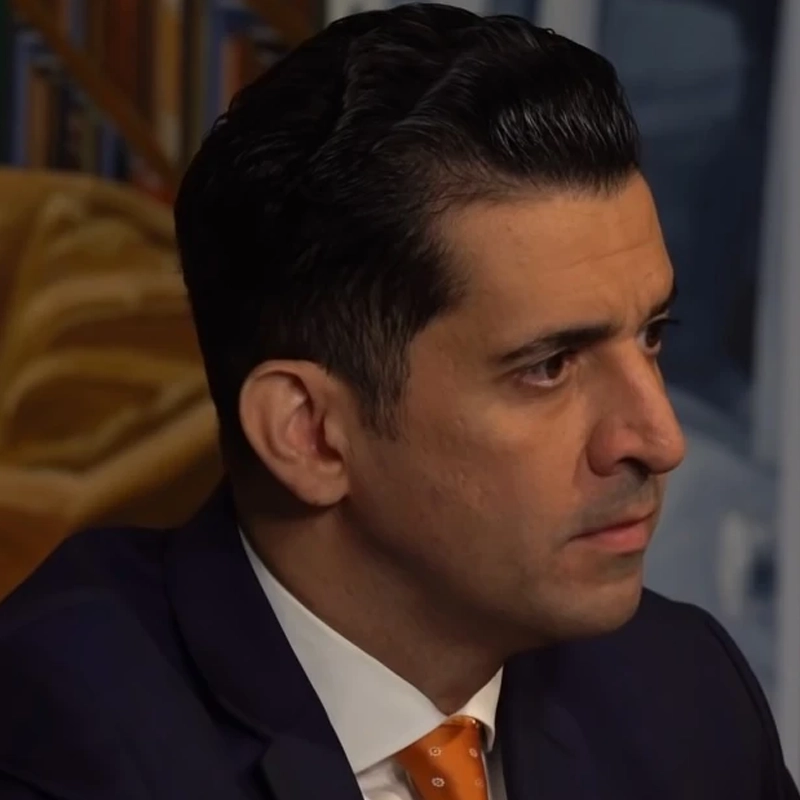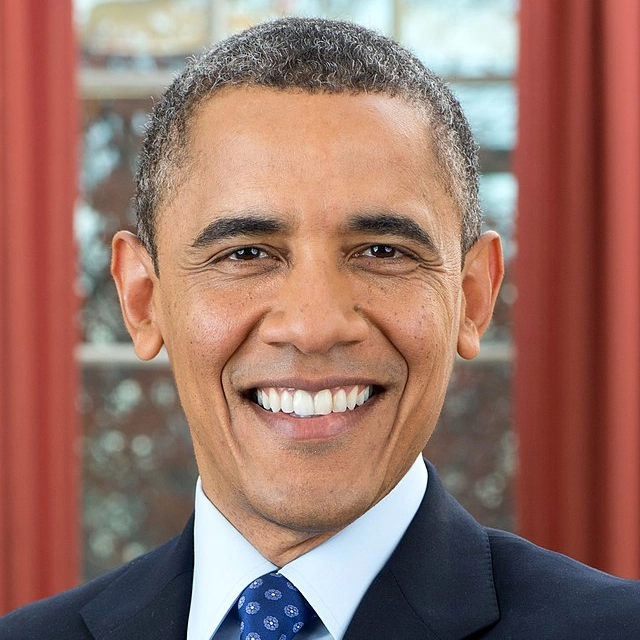ISIS Audiobook Summary
The Islamic State, known as ISIS, exploded into the public eye in 2014 with startling speed and shocking brutality. It has captured the imagination of the global jihadist movement, attracting recruits in unprecedented numbers and wreaking bloody destruction with a sadistic glee that has alienated even the hardcore terrorists of its parent organization, al Qaeda.
Jessica Stern and J.M. Berger, two of America’s leading experts on terrorism, dissect the new model for violent extremism that ISIS has leveraged into an empire of death in Iraq and Syria, and an international network that is rapidly expanding in the Middle East, North Africa and around the world.
ISIS: The State of Terror traces the ideological innovations that the group deploys to recruit unprecedented numbers of Westerners, the composition of its infamous snuff videos, and the technological tools it exploits on social media to broadcast its atrocities, and its recruiting pitch to the world, including its success at attracting thousands of Western adherents. The authors examine ISIS’s predatory abuse of women and children and its use of horror to manipulate world leaders and its own adherents as it builds its twisted society. The authors offer a much-needed perspective on how world leaders should prioritize and respond to ISIS’s deliberate and insidious provocations.
Other Top Audiobooks
ISIS Audiobook Narrator
Ray Porter is the narrator of ISIS audiobook that was written by Jessica Stern
Jessica Stern is a leading expert on terrorism and trauma. Stern is the coauthor with J. M. Berger of ISIS: The State of Terror and the author of Denial: A Memoir of Terror and Terror in the Name of God: Why Religious Militants Kill, selected by the New York Times as a notable book of the year. She has held fellowships awarded by the Guggenheim Foundation, the Erikson Institute, and the MacArthur Foundation. She was a Council on Foreign Relations International Affairs Fellow, a national fellow at Stanford University’s Hoover Institution, and a fellow of the World Economic Forum. Stern is a research professor at Boston University. Prior to teaching, she worked in government, serving on President Clinton’s National Security Council Staff and as an analyst at Lawrence Livermore National Laboratory.
About the Author(s) of ISIS
Jessica Stern is the author of ISIS
More From the Same
- Author : Jessica Stern
- My War Criminal
- Denial
- Publisher : HarperAudio
- Abraham
- American Gods [TV Tie-In]
- Dead Ringer
- House of Sand and Fog
- Prey
ISIS Full Details
| Narrator | Ray Porter |
| Length | 9 hours 39 minutes |
| Author | Jessica Stern |
| Category | |
| Publisher | HarperAudio |
| Release date | March 12, 2015 |
| ISBN | 9780062396358 |
Subjects
The publisher of the ISIS is HarperAudio. includes the following subjects: The BISAC Subject Code is General, Psychology
Additional info
The publisher of the ISIS is HarperAudio. The imprint is HarperAudio. It is supplied by HarperAudio. The ISBN-13 is 9780062396358.
Global Availability
This book is only available in the United States.
Goodreads Reviews
Will
December 01, 2018
…violent apocalyptic groups are not inhibited by the possibility of offending their political constituents because they see themselves as participating in the ultimate battle. Apocalyptic groups are the most likely terrorist groups to engage in acts of barbarism, and to attempt to use rudimentary weapons of mass destruction. Their actions are also significantly harder to predict than the actions of politically motivated groups. For most of us the acronym ISIS conjures up an array of images, mostly of a dark sort. Beheadings, suicide bombers, desert fighters, usually of Middle Eastern extraction, fanaticism, in short, and bloody. All this is pretty much the case, but there is so much more to know about this entity, the latest in a long line of international boogeymen. How did ISIS come to be? What do they want? What differentiates them from other extremist groups? And what might be done about them? Jessica Stern - image from Backlight, a Dutch news program ISIS: The State of Terror, attempts to look past the Kalashnikovs and keffiyehs to get a deeper understanding of this very scary organization. The Islamic State of Iraq and Syria, aka The Islamic State of Iraq and the Levent, aka The Islamic State, did not arise, whole, from the sands. Stern and Berger trace the growth of ISIS from its beginning as al-Qaeda in Iraq, headed by a career criminal, through the chaos in Iraq and Syria to a rejection of al Qaeda in favor of a more local, territorial aim. J.M Berger - from The NY TimesOne of the very interesting distinctions made here is between al Qaeda, in a way a more removed entity, interested in catalyzing this or that AQ franchise, playing a long game, and ISIS’s more direct immediate territorial ambitions. There is enough in here on the many battles, political and kinetic, among many of the like-minded groups in the area, but not so much as to glaze your eyes. From the ABS News pieceWith chronic instability in Iraq, and growing instability in Syria the table was set for many groups to try to seize pieces, and ISIS had a compelling selling point. They claimed they were about re-establishing the caliphate, a centuries old dream of uniting much of the Middle East under Islamic law ruled by a caliph. Al Qaeda had been promising this, but in the long term. ISIS, every time they gained more real estate, proclaimed it ever louder as a reality. And ISIS has gained a considerable swath of real estate in the area. This became a major selling point. The most interesting element of the book for me was following how ISIS mastered communication skills, using expertise from contributors across the planet, including from Americans. It grew from exchanging information on restricted sites, to using Facebook and Twitter. How successful is the West’s Whack-a-mole strategy against the proliferation of jihadi sites, FB and Twitter identities? How does ISIS try to get around it? ISIS has been very successful at getting out their message. Well, that should be messages, as it is of two general sorts. ISIS is fond of creating videos showing extreme violence, combat, and executions, the bloodier the better. This serves several purposes, not least of which is to encourage folks with a sociopathic bent to come on down and let their urges loose. ISIS really is recruiting an army of psycho killers. Such hateful propaganda has an impact on their enemies as well, as Iraqi soldiers, for example, when faced with ISIS fighters, have been more inclined to flee than to risk capture and certain execution. Not only did [ISIS] implement a draconian regime of crime and punishment, which its members believed to be divinely ordained, but it celebrated and painstakingly documented the process in its propaganda, publicizing everything from the destruction of cigarettes and drug stashes to the amputation of thieves hands “under the supervision of trained doctors” to the genocidal extermination and enslavement of Iraqi minorities. In many ways, the combination of elements was unprecedented. Nazi Germany, whose parallels in propaganda and brutality often invited comparisons to ISIS, had produced masterful propaganda while carrying out a painstakingly documented program of genocide, but these were separate efforts. Its propaganda did not celebrate the genocide; rather it served to justify an imperative to act in the name of national and racial purity without sharing the gruesome reality. The Nazis did not broadcast their atrocities to the world. In stark contrast, ISIS presented its vision of a demented utopia in which children played with severed heads and ran laughing down streets lined with mangled bodies instead of trees. A seemingly endless procession of atrocities was captured in photographs and videos, and distributed through both official and unofficial channels on social media. One of the many extreme measures ISIS employs has been called “total organization.” This is an attempt to remove all influence from prior or outside cultures. It includes a monopoly on education and control of all aspects of life, a truly totalitarian approach. This technique was employed by Pol Pot in the 1970s in Cambodia. A related ISIS practice is to recruit and train children for combat, an internationally recognized war crime. Long term exposure to extreme violence can erode moral concerns, as young people become inured to death and killing. It encourages an extreme quest for purification, and woe to anyone deemed inadequately pure. - From the Express articleBut ISIS also promotes a civilized image, portraying a growing caliphate where devout Muslims can live the good life among their peers. Of course, the peers part may not really hold for women, who are likelier to find themselves sexually enslaved and traded among Islamic fighters than they are to live an idyllic life closer to Allah. ISIS also produces slick, action-oriented videos instead of stale single-frame lectures by old guys, instructing viewers on a particular interpretation of a Koranic issue. They cover diverse subjects, including global warming.There is a look as well on the impact of Western involvement in Syria and Iraq. One unintended consequence has been that the West has done an excellent job of clearing paths for ISIS by taking out Syrian rebel groups that were hostile to them. What one comes away with is at both ends of the spectrum. You can see how disturbed and disturbing these folks are. Scary, crazy, homicidal people, no question. Also, giving the devil his due, how smart and contemporary they have been in mastering social media, leaving al Quaeda in their dust. You will also gain a much more nuanced understanding of what al Qaeda is, and how it functions. Add in an appreciation for the difference between terrorism and insurgency.What is to be done? Opinions differ, of course. It begins with a vision of the threat. Is ISIS an existential threat to the West? Clearly not. They lack the sort of global destructive capacity of, say, the Russian, or American nuclear arsenals. Are they a threat to Western access to Middle Eastern petroleum resources? While ISIS can certainly cause mayhem in their neck of the woods, they are not yet, and may not ever, be strong enough to take on Saudi Arabia or Iran. At the point at which such a threat presents, the West can be expected to ramp up its military engagement, whether directly or through client-states. The more immediate, specific threat to Western resource access, IMHO, is to the oil fields of Iraq. If those are threatened, more than they have already been, expect the big guns to get involved.Some seem to believe that dropping daisy cutters wherever ISIS has planted a flag is the best way to eliminate the threat. It is also an excellent way of ensuring a continuing supply of anti-Western sentiment in the region. You do not save a village by destroying it, and one would expect that there is plenty of anti-ISIS sentiment within areas ISIS controls. Who would know better how awful these people are than those subject to their rule, and why would you want to eliminate a potential source of anti-ISIS rebellion?One option would be to direct military resources to containing ISIS (or trying to, anyway) within a defined area and let them drown in their own inability to rule. Terror does not produce crops, distribute clean water, or manufacture desirable consumer goods. An ISIS-led society is quite likely to collapse from within, given some time. Of course, enforcing a territorial limit on ISIS has not exactly been successful so far, so this maybe purely a theoretical option. It is also worth examining why it is that so many Islamic folks in the West, whether their heritage is Middle Eastern or not, have been radicalized to support ISIS and other crazies cut from the same cloth. Also, it is worth considering that ISIS did not arise from some peaceable society, like a sudden disease. Syria and Iraq have been something less than idyllic for quite a while. From the iron-fists of Saddam Hussein and Bashir Assad, to the ham-fisted approach of Western militaries, there is plenty of blame to go around for ensuring ongoing misery.While I found this to be a fascinating, information-rich book, there was one item that I found puzzling. At the beginning of the book the authors offer a very useful glossary, and a timeline of relevant events. I was struck, in the latter, by the absence of an entry for the date (in May 2003) when the USA-led Coalition Provisional Authority dismissed the Iraqi army, putting over two hundred thousand young Iraqi men, with guns, on the street. Surely, providing a vast pool of resentful, potential recruits for a jihadist movement deserves a place on that list. The paperback version begins the timeline with April 2005, but the original, hardcover version starts with March 20, 2003. Not sure why they chopped off the first ten entries from the earlier version, but, in any case, the Army dismissal is quite significant and should have been included. The challenge of ISIS is likely to be with us quite a while, a generation at least, and the residue of their crimes will echo for decades to come, even were they to be eliminated as a political/military force tomorrow. It is more important than ever that approaches to meeting this challenge be based on knowledge rather than bombast, on nuance rather than nonsense, on facts rather than falsehoods. Stern and Berger’s insightful look into one of the most dangerous political players in the world is a must read for anyone interested in gaining an informed view of what ISIS is, how they arose, and what they are planning. We need all the intelligent analysis we can get if we are to stop their reign of terror before they becomes a global threat. Published March 12, 2015The paperback edition was released February 9, 2016This review posted March 18, 2016 =============================EXTRA STUFF Links to the author’s personal, Twitter and FB pagesLinks to the author’s personal, Twitter and FB pagesFour excerpts are available on the Brookings blog Lawfare------ Smart Mobs, Ultraviolence, and Civil Society: ISIS Innovations -----The Race to Caliphate-----ISIS and Sexual Slavery-----ISIS as Cult Some news reports of interest-----To Maintain Supply of Sex Slaves, ISIS Pushes Birth Control - NY Times - By Rukmini Callimach – March 12, 2016 -----ISIS – Trail of Terror - ABC News - By Lee Ferran and Rum Momtaz-----Now depraved ISIS militants encourage children to execute their parents - The Express - 1/13/16 – by Patrick MaguireYou might want to check out The Management of Savagery - a how-to for terrorists that has been a field manual for ISISAn interesting piece on how ISIS terror on the continent - How ISIS Built the Machinery of Terror Under Europe’s Gaze - by Rukmini Callimachi - New York Times - March 29, 2016The US is adding more boots on the virtual ground in the war with ISIS - U.S. Cyberattacks Target ISIS in a New Line of Combat - by David Sanger - April 24, 2016 - New York TimesThis fascinating piece in The Interpreter feature of the New York Times looks at commonalities between what it calls intimate terrorism and its broader manifestations, in light of the outrage in Orlando - Control and Fear: What Mass Killings and Domestic Violence Have in Common By Amanda Taub - June 15, 2016August 1, 2017 - NY Times - a sad piece on the devastation left behind by ISIS and the war on it - In Mosul, Revealing the Last ISIS Stronghold - by Ivor PrickettNovember 21, 2018 - The growth of cyber-tooled terrorism is alarming. This Politico piece by former assistant AG for the DoJ's security division John P. Carlin should cause you some lost sleep - Inside the Hunt for the World’s Most Dangerous Terrorist
Abubakar
November 12, 2016
It didn't happen overnight, but the world woke up to the nightmare of ISIS in summer 2014. Before that ISIS was in the news, but not the way it wanted to be and only as an obscure offshoot of AQ. So It changed that forever, when a gruesome video of barbaric murder of James Foley (an American journalist) spread over internet like wildfire. It introduced the world to an extremist group that was more brutal, violent and powerful than any other terrorist organization. A group of terrorists who celebrated violence and mayhem, were now in control of large parts of Syria and Iraq. They still are, and for all we know it wont be easy to get rid of them. Jessica Stern and J.M.Berger wrote this book with a profound clarity and academic neutrality. Starting from the rise of Zarqawi, the main force behind the ideology of ISIS, his ruthless tactics that inspired some sick minded terrorists and terrified the rest. A man so consumed by hatred and cruelty, that he was denoucned as “too brutal” even by the AQ main command. The story gets darker and darker, till we reach the Syrian Civil war, the catastrophic tragedy that gave ISIS a free ground for recruitment and showing its capacity as a well organized militant group. The story is that of failure, betrayal and heavy costs of monstrous mistakes. The two most significant aspects of ISIS's tactics that this book covers in great detail, deal with its Cyber and Psychological warfare, a phenomena that exculsively belongs to ISIS. ISIS used internet chat rooms and social media to spread its message across the globe, and the potency of message was grossly enhanced by its brutal tactics. It used shock as a technique, and told everyone that it wasn't just any terrorist organization, but one with a clear ideology of global dominance, and was prepared to go to any lengths for that. Its twitter posts had almost unfettered access to millions of users around the world, a method so effective that it threw strategists off their rockers. By showing horrifying images of massacre and mayhem, it ensured that those with sick fetishes will rush into its fold. Its propaganda ceaselessly kept inspiring thousands. By frequently exposing people to savagery, they attenuated empathy in potential recruits, and significantly reduced their capacity to feel it. It enabled them to dehumanize others, to coalesce himself into an alternate universe of Islamist Jihad, a religious extremist narrative, with such potency as to become immune to humaneness or pity. It is by using this frequent exposure to violence as a technology to erode empathy among its followers. The authors did not blame Islam for this mess. It came as pleasant reprieve fromt the usual rants that muslims and arabs are just inherently/genetically "bad".Instead, They think that an extremist understanding of the doctrine of Jihad has been used as a justification, an instrument to recruit gullible muslims youngsters. And the religious community has terribly failed to present a strong counter narrative. Religion is not the only culprit, and not the only motivation but it still plays a critical role.If religion wants to save its future, it must separate itself from politics and armed violence. A recent poll said that more than 84% of muslims in Pakistan want Sharia law to be imposed in the country. Religious seminaries and Jihadist organizations have been active, with and without state approval for decades. Thanks to American training and Saudi money, the cancer of fundamentalism founded in 80s Pakistan is still devouring its inhabitants.Isis is incestuous child of Jihad, politics and regional instability. It is the most horrific impulses of humanity, dressed in fanatic pretexts of religiosity that have been gutted of all nuance and complexity. Things fall apart; the center cannot hold; Mere anarchy is loosed upon the world, The blood-dimmed tide is loosed, and everywhere The ceremony of innocence is drowned; The best lack all conviction, while the worst Are full of passionate intensity. - The Second Comming by W.B.Yeats
11811 (Eleven)
April 23, 2015
Easily the most academic book-length material I've read on the subject. I don't want these guys knocking on my door someday passing out literature, or heads, or whatever.
Steven
March 16, 2015
At a time when we see images of Iraqi forces backed by Iranian supported Shi'a militias trying to retake Saddam Hussein’s home of Tikrit from the Islamic States of Iraq and Syria (ISIS), and we witness young girls leaving their homes in London and make their way through Turkey to join the jihad in Syria, it raises enumerable questions for politicians and the public worldwide. Foremost, is how did we arrive at this point with ISIS, ISIL, IS or whatever their name is at the moment. In addition, how culpable is the United States for the situation that it finds itself in today; returning troops to Iraq, engaging in a major bombing campaign in Iraq and Syria, spending millions, if not billions of dollars on an Iraqi army that when confronted with ISIS soldiers months ago fled in fear and left behind enough weaponry and equipment to enhance ISIS’ already burgeoning military machine. The answers to these questions can be found in Jessica Stern and J.M. Berger’s new book, ISIS: THE STATE OF TERROR, one of the first books that seriously attempts to analyze the rise of ISIS; concentrating on the fallout from the American invasion of Iraq in 2003, its evolution under al-Qaeda and its eviction from that organization, to its announcement of the new Islamic Caliphate, and its employment of technology and advanced propaganda strategies to attract foreigners to fight and organize their new state.Beginning with the horrific beheading of journalist James Foley on August 19, 2014 the authors begin to unravel the rise of ISIS and why the United States did not see the latest jihadi organization coming. The origin of ISIS emerged from the mind of Abu Musab al Zarqawi, a Jordanian who joined the insurgency against the Soviet Union in Afghanistan as it was drawing to a close in 1989. Partially radicalized by Sheik Abu Muhammad al Maqdisi, the architect of jihadi Salafism, Zarqawi would spend the greater part of the 1990s in a Jordanian prison where he was further drawn to Islamic extremism. Zarqawi brought a sectarian approach to his understanding of jihad, and the United States gave his beliefs a purpose when they invaded Iraq in 2003. Zarqawi was able to develop al-Qaeda in Iraq (AQI) because of American policy errors. When Paul Bremer, head of the Coalition Provisional Authority disbanded the Iraqi military and fired all of Saddam Hussein’s Ba’ath Party members from civil service positions there were few trained people left to maintain government services, and it produced thousands of angry Sunnis who had military and civil training. The result has been the development of an insurgency that the US was unprepared for. The authors correctly argue that the US created the environment for Zarqawi’s brutal tactics and rabid sectarianism. The second major error the US committed was throwing its support behind Nuri al-Maliki, a supposedly moderate Shi’a Muslim to be Prime Minister in 2006. Maliki would prove to be a very divisive figure with strong ties to Iran. His policies turned Sunni Iraqis against his government as promises of political power and integration into the military never came to fruition. By 2006 a full scale sectarian war had broken out resulting in the death of Zarqawi by an American air strike, and months later a coalition of jihadi insurgents announcing the creation of the Islamic State of Iraq (ISI) under the leadership of Abu Omar al Baghdadi. As Maliki cracked down on Sunni leadership and purged them from positions of power. Sunnis, fearful of their government and Shia militias had no place to turn to, hence they looked to ISI.Once the authors explained the origins of ISIS they move on to provide a detailed description of how ISI expanded and eventually moved into Syria, changing their name to the Islamic State if Iraq and Syria. The authors review ISIS’ relationship with al-Qaeda and Osama Bib-Laden, exploring their differences in strategy, organization, and interpretation of the Qur’an. ISIS took advantage of events in Syria and expanded their violent millenarian view of Islam and by February, 2014 Ayman al Zawahiri, who had taken over leadership of al-Qaeda after Bin-laden was killed, disassociated his organization from ISIS over their extreme tactics and their presence in Syria. With Maliki’s partisan Shia approach to governance more and more Sunnis joined ISIS, many of which were Saddam’s generals. The result was that by June 2014, ISIS had captured Fallujah, Mosul, and Tikrit. On June 29, 2014, ISIS declared the Islamic Caliphate, an action designed to subsume all jihadi organizations, including al-Qaeda under their leadership. ISIS abhorrent approach to human life continued, but their sophisticated messaging now included a vision of the type of society it wanted to create.About half way through the book the authors switch their approach from a historical narrative supported by many keen insights to a sociological-psychological dimension. Chapters dealing with the importance of how ISIS employs technology and social messaging, including how twitter, Facebook, YouTube, and other social media are used to recruit foreigners to join the new Caliphate, and spread their influence throughout the Middle East and beyond. The authors explore how ISIS presents a strange dichotomy of ultra-violence and civil disorder as it streamed its propaganda and vision of society that went beyond the violence of jihadism, i.e, governing and social services. The sophistication of ISIS’ approach to the media and the digital film world are detailed. ISIS professionalization of film making and messaging are designed to attract fighters, but also “middle management.” In effect what ISIS is engaged in is “cyber jihad” with electronic brigades that allow them to create new opportunities to expand their “brand.” The authors examine the new psychology of terrorism and how it is used to influence their enemies and maintain control of other jihadi organizations world-wide. The main problem they export is “disproportionate dread,” and the manipulation of perception that the west has yet to counter.According to Stern and Berger ISIS’ message differed from the approach that was offered by al-Qaeda whom they saw as defeatist because they never believed that the Caliphate would be achieved in their lifetime. Their message is one of extremism itself, but purified. They offer no rationalizations of self-defense against the west, just revenge. No longer will there be subtle assumptions of weakness, just aggression and shocking violence and strength. No more talking about a generational conflict, the Caliphate had been proclaimed. Their “combination of successful strategy, aggressive messaging, and an appeal to strength over weakness has proven unequally powerful and energized at least tens of thousands of ardent supporters.” (197)The latter part of the book explores the current state of ISIS as of early January, 2015 and the authors are fully cognizant that things may have changed since the book went to press. Stein and Becker offer advice as to how to deal with ISIS and suggest that a different approach than has been used in the past should be implemented. Military action to decapitate the leadership of a country does not always prove successful. Once the leadership is gone we are then faced with situations that have existed in Iraq since 2004, and more recently in Libya after the overthrow of Moammar Gadhafi. President Obama may call for the defeat and destruction of ISIS, but what we must accept is that this has become a generational problem as the authors point to the indoctrination of children by ISIS, so that once the current leadership has passed a new generation will take over. The book also includes a detailed appendix dealing with Islamic thought and history that nicely supplements the main text. Explaining the differences between Shi’a and Sunni Islam, Salafism and Wahhabism, and the different interpretations of jihad are important to understanding what has occurred and where we go from here. The book is based on interviews and secondary sources and at this point, is one of the two best monographs on the topic. The other, ISIS: INSIDE THE ARMY OF TERROR by Michael Weiss and Hassan Hassan will be presented in my next review.
Trish
December 29, 2015
This report on the state of [Islamic] terror worldwide is essential to our understanding of a new kind of ideological warfare and how it is fought. In addition it raises issues of security far from the physical battlefields in Syria or Iraq, and describes the ways in which bad actors influence surveillance and curbs on free speech. Finally, it contrasts Al Qaeda with ISIS along many threads, and leaves open the possibility that one will eventually absorb the other."The West has too often found itself fighting the last war, when the next war is taking shape before its eyes. Faced with the expansionist, populist rise of ISIS, we cannot afford to keep making that mistake."The authors describe the online presence of ISIS and the methods used to gain followers through media sites. The Twitter Wars fought among splinter ideologues and referred to in newspaper reports are laid out in ravishingly detail, and the analysis is explicit and thoughtful. Especially interesting is the informed discussion on whether attempts to limit ISIS participation on social media sites controlled by U.S. organizations (i.e., Twitter, Facebook, etc.) helps or hurts attempts to reign in ISIS influence. Stern and Berger define terrorism (“terrorism is psychological warfare”) and remind us “people understandably forget sometimes [that] terrorism is ultimately intended to send a message to the body politic rather than being a pragmatic effort to destroy an enemy…” The particular makeup of our psychologies make us susceptible to fear when the chances of death or maiming by terrorist plot is vanishingly low, even when compared to a car accident while driving to work in the morning. The terrorists are taking advantage of those irrational fears and can be extraordinarily effective in desensitizing large groups of people to empathy. In the most successful attempt yet to explain the extreme violence shown online by ISIS, Stern & Berger posit"…Empathy can…become attenuated…when a person is too often severely frightened, too often victimized, or too often involved in perpetrating violence. Frequent exposure to savagery is one way to reduce a person’s capacity to feel. When a person is trained, or trains himself, to feel less empathy and its absence becomes a trait, he becomes capable of dehumanizing others, putting him at risk of acts of extreme cruelty. In our view, ISIS is using frequent exposure to violence as a technology to erode empathy among its followers."This theory helps to explain why ISIS is involved in teaching and training young children—the younger the better—in weapons training and inculcation: “young children are easier to mold into ISIS’s vision of this new man...Leadership decapitation is significantly less likely to be effective against organizations that prepare children to step into their fathers’ shoes.” Regarding desensitization to extreme violence, “residents of Raqqa report…that children are taught how to behead another human being, and are given blond dolls on which to practice.”In the last sections of the book (before the Appendix in which they give background information and definitions), the authors consider possible outcomes of Western involvement in the attempt to crush ISIS and ask the question: should we be fighting against ISIS or “for” something? The authors suggest that we must be held responsible for U.S. tactics or policies that are actually inciting rage and violence: drone strikes, extraordinary rendition, regime change, torture, and the misguided promotion of electoral democracy around the world. ”We must find better ways to balance our security against common sense and widely accepted ethical principles. That means refusing to rush in to war every time we are invited by someone waving a black flag, but it also means taking a closer look at our strategies and tactics, and asking how they can better reflect our values. In the conflict with ISIS, messaging and image are half the battle, and we do ourselves no favors when we refuse to discuss the negative consequences of our actions.”Jessica Stern is a policy analyst specializing in terrorism affiliated with Harvard’s School of Public Health and the Hoover Institution Task Force on National Security and Law. J.M. Berger is a nonresident fellow in the Project for U.S. Relations with the Islamic World at the Brookings Institution. Both appear to have closely monitored the appearance and development of ISIS outreach online, and seem to be defining a new kind of war that has enormous implications for how we live our lives now and in the future, to say nothing of how we fight.
Jennifer
October 13, 2015
[As an aside, I was talking to my older son yesterday, and when he saw the cover of this book, he said, "There's a book about ISIS that's in the waiting room at work, and some people were really mad that it was there." "Hmm," I said. "It seems to me that, when people have expressed the desire to destroy you and your society, it would be wise to learn as much about them as possible, if only so you're better equipped to stop them."]Stern and Berger have some impressive credentials, and their look into the history and workings of ISIS is as insightful as it is horrifying. While the authors themselves admit that this is a developing issue, so the completeness of this volume is limited by the mutable nature of the situation. But they do address the issues of Islamic fundamentalism (and the ways in which the various branches thereof interact and clash) more thoroughly than most such studies. It's not the be-all-and-end-all book on the topic, but it's a good place to start for anyone who wants to know more about ISIS, its roots, and its goals.
Marcus
March 26, 2016
Some quick notes:- non-linear, goes through a brief overview then dives into specific aspects- good section on Islamic State's use of video for recruiting- heavy focus on the social media aspects of Islamic State. Specifically how they use Twitter and other social networks.- interesting take on what Twitter has done and should do to prevent Islamic State from growing on their platform- interesting section with suggestions for how to combat Islamic State - the only book I've read that takes that challenge head on- nice appendix with a very brief history of Islam with emphasis on the parts relative to Islamic StateIslamic State is consistently portrayed across all three books I've read about them as completely depraved with no redeeming qualities. The worst of the worst.
Ângela
May 31, 2019
O melhor livro que já li relativo ao assunto. Bastante completo e com toda uma série de links e provas que fundamentam a linha de pensamento das autoras, aprendi bastante com este livro; poderá ser maçador para quem quer apenas ter algumas luzes em relação ao Estado Islâmico , visto que entra em detalhes.
Tina
May 05, 2015
This is the second Michiko read for me concerning ISIS, the other being Michael Weiss's recent release, "ISIS: Inside the Army of Terror." Obviously, both books covered a lot of the same territory, but I would personally recommend this one over the other (though you could read both, like me!). Weiss's book sits more in a straightforward historical genre, while Stern's delves more deeply into analytical discussion. Stern includes a glossary and appendix that are extremely helpful in preparing the layman reader to delve into this subject. Her reach is expansive, almost becoming a broad analysis of terrorist movements in general with ISIS as the current specific focus. She explores the history and context of ISIS's creation, but also moves into coverage of media strategy, recruitment of women and foreign fighters, and the psychology of radicalization. It definitely seems her pet research project is the social media presence of terrorism, as she spends a large part of the book exploring that subject. There's a lot there to consider, including the sticky issue of censorship, private v. public domains, and the deceptive perceptions social media can engender. I definitely feel like this is an incredibly informative, well-researched, and accurate book for anyone to learn more about what is currently happening in the Middle East - a topic relevant to all of us because of its global repercussions. Look for a more detailed review on www.iwantmichikosjob.com.
Richard
March 22, 2015
It is clear the authors were very knowledgeable about how ISIS started and its origins. I learned a lot about the founding of the group and its existence in Iraq even before the 2003 invasion. It was very obvious the authors were liberal democrats who blamed President George W. Bush for the creation of ISIS while ignoring the fact that President Obama pardoned its leader Abu Bakr Al Baghdadi. It was clear ISI was defeated until we released them all. But despite their liberal leanings they made good points about the gravest error the Bush administration made was the banishment of all former Bathists from holding any political office. Although that law was walked back in 2008 the damage to the Sunni population was done. I think this was a well sourced book that everyone interested in what is happening in Syria should read. It will give a slanted opinion on Iraq, but for the most part the book explains the simple truth that the only government worse than a dictator is a broken government. The authors pointed out our removal of Saddam Hussein and the Libyan dictatorships caused a void that is being filled by uncontrollable violent Jihad. Overall a very good book.
Daniel
June 28, 2016
Simply fascinating. Other books are better at tracing ISIS's history, military campaigns, and internal politics, but this is the best I've read (so far) about how ISIS spreads and popularizes its ideological messages using psychological theory and 21st century social media. (Chapters 6 and 7, "Jihad Goes Social" and "The Electronic Brigades," are especially riveting.) The authors also remind us (that is, potential victims of ISIS terror) not to rise to the bait of indulging this ridiculous group's Manichean worldview. This is not to say that we should disregard the serious threat that ISIS poses, but rather that we should not exaggerate that threat, nor let it injure or jettison the better angels of our nature.
Taylor
May 02, 2017
The book is chalk full of factual information. I decided to read this book because I find myself falling victim to the mediatized demon, ISIS, and the fear they work to instill in unsuspecting victims. This book walked through the history of ISIS, where they came from, and attempted to explain the very complex connections of the "jihadist" groups in the Eastern Hemisphere and their scope of control in other countries. I applaud the author for sticking to the facts and trying hard to stray from adding their personal opinions. I found a couple quotes and poetic usages relatable and overall feel much more enlightened on ISIS as a whole, their actions and potential reasons behind their atrocities. If I took anything from this book, it was an understanding of how the United States has influenced the movement and has reinforced my preconceived notions that we feel we are the police of the world.
Michael
January 09, 2023
Interesting but very narrow focus
Amara
March 28, 2020
I'm still reading the book. Just finished the introduction. I must comment that the introduction draws a very graphic, magnetic and factual perspective. I like how Berger & Stern started off with "An American dressed in an orange jumpsuit", and describing the person standing next to him in all black with knife. That paragraph really shows how ISIS is using preexisting ideologies to communicate their message to the American culture, also showing how organised they are and how far they are willing to go to obtain their target.
Most Popular Audiobooks
Frequently asked questions
Listening to audiobooks not only easy, it is also very convenient. You can listen to audiobooks on almost every device. From your laptop to your smart phone or even a smart speaker like Apple HomePod or even Alexa. Here’s how you can get started listening to audiobooks.
- 1. Download your favorite audiobook app such as Speechify.
- 2. Sign up for an account.
- 3. Browse the library for the best audiobooks and select the first one for free
- 4. Download the audiobook file to your device
- 5. Open the Speechify audiobook app and select the audiobook you want to listen to.
- 6. Adjust the playback speed and other settings to your preference.
- 7. Press play and enjoy!
While you can listen to the bestsellers on almost any device, and preferences may vary, generally smart phones are offer the most convenience factor. You could be working out, grocery shopping, or even watching your dog in the dog park on a Saturday morning.
However, most audiobook apps work across multiple devices so you can pick up that riveting new Stephen King book you started at the dog park, back on your laptop when you get back home.
Speechify is one of the best apps for audiobooks. The pricing structure is the most competitive in the market and the app is easy to use. It features the best sellers and award winning authors. Listen to your favorite books or discover new ones and listen to real voice actors read to you. Getting started is easy, the first book is free.
Research showcasing the brain health benefits of reading on a regular basis is wide-ranging and undeniable. However, research comparing the benefits of reading vs listening is much more sparse. According to professor of psychology and author Dr. Kristen Willeumier, though, there is good reason to believe that the reading experience provided by audiobooks offers many of the same brain benefits as reading a physical book.
Audiobooks are recordings of books that are read aloud by a professional voice actor. The recordings are typically available for purchase and download in digital formats such as MP3, WMA, or AAC. They can also be streamed from online services like Speechify, Audible, AppleBooks, or Spotify.
You simply download the app onto your smart phone, create your account, and in Speechify, you can choose your first book, from our vast library of best-sellers and classics, to read for free.
Audiobooks, like real books can add up over time. Here’s where you can listen to audiobooks for free. Speechify let’s you read your first best seller for free. Apart from that, we have a vast selection of free audiobooks that you can enjoy. Get the same rich experience no matter if the book was free or not.
It depends. Yes, there are free audiobooks and paid audiobooks. Speechify offers a blend of both!
It varies. The easiest way depends on a few things. The app and service you use, which device, and platform. Speechify is the easiest way to listen to audiobooks. Downloading the app is quick. It is not a large app and does not eat up space on your iPhone or Android device.
Listening to audiobooks on your smart phone, with Speechify, is the easiest way to listen to audiobooks.






























